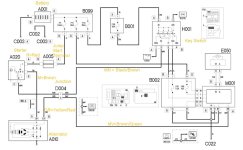Fedupoffiats
Member
Help needed.
I went out to my 2007 3.0 Ducato just before Christmas as I’d got a recovery to do and the dash lights came on but it did absolutely nothing when I turned the key.
I tested the battery. 12.9 volts.
I checked earth straps. We’re a little dirty but nothing major. Cleaned them up and put them back….. Nothing.
Bought a new battery and fitted it…. Nothing.
Bought a new starter motor and fitted it…. Nothing.
Tested continuity of earth straps just to be sure and they were fine but I’ve added another earth strap to the battery terminal just because.
I added an earth strap directly from the negative terminal on the starter motor to the body of the truck and when I turned the key, I did get a click from the starter at that point. It blew the fuse in the little fuse box thingy in the battery compartment so I’ve changed that and took the earth strap I added off the starter.
I don’t get it!! I have done thousands of miles in this truck and it was working fine the day before.
I have tested that there is a decent connection on the starter terminals from the battery and the brown/black wire from the key switch to the starter motor is live when the key turns so I assume the switch is ok.
Immobiliser light some on and goes off and as far as I can see/hear all the relays click/work when I turn the key.
I’ve put it in gear and rocked it back and forth in case the starter was stuck.
I feel like I’ve tried everything but is there something I’m missing?
My head is fried now…….. I need to get some help!
I went out to my 2007 3.0 Ducato just before Christmas as I’d got a recovery to do and the dash lights came on but it did absolutely nothing when I turned the key.
I tested the battery. 12.9 volts.
I checked earth straps. We’re a little dirty but nothing major. Cleaned them up and put them back….. Nothing.
Bought a new battery and fitted it…. Nothing.
Bought a new starter motor and fitted it…. Nothing.
Tested continuity of earth straps just to be sure and they were fine but I’ve added another earth strap to the battery terminal just because.
I added an earth strap directly from the negative terminal on the starter motor to the body of the truck and when I turned the key, I did get a click from the starter at that point. It blew the fuse in the little fuse box thingy in the battery compartment so I’ve changed that and took the earth strap I added off the starter.
I don’t get it!! I have done thousands of miles in this truck and it was working fine the day before.
I have tested that there is a decent connection on the starter terminals from the battery and the brown/black wire from the key switch to the starter motor is live when the key turns so I assume the switch is ok.
Immobiliser light some on and goes off and as far as I can see/hear all the relays click/work when I turn the key.
I’ve put it in gear and rocked it back and forth in case the starter was stuck.
I feel like I’ve tried everything but is there something I’m missing?
My head is fried now…….. I need to get some help!



